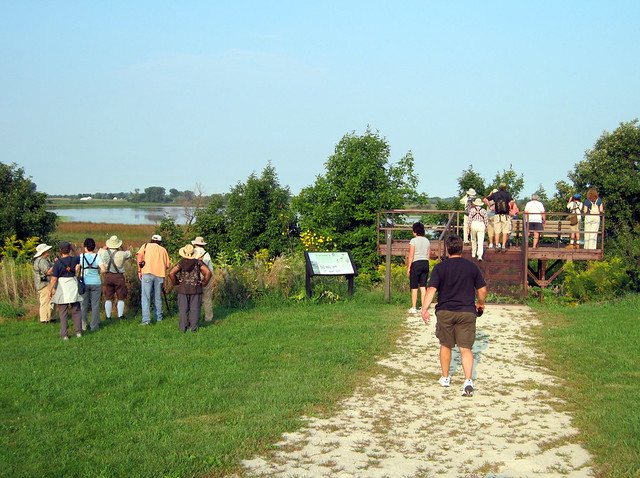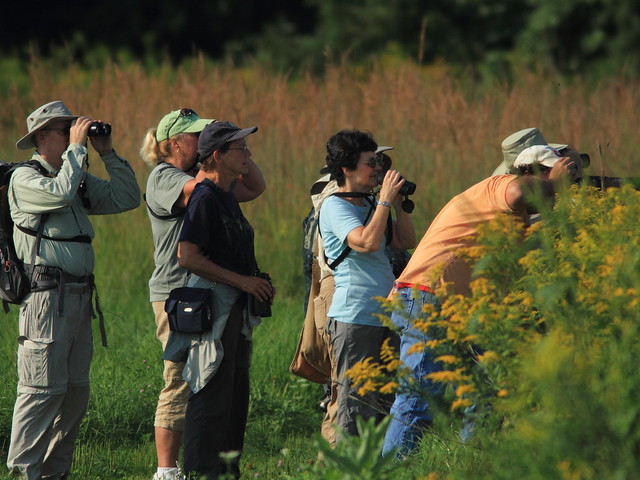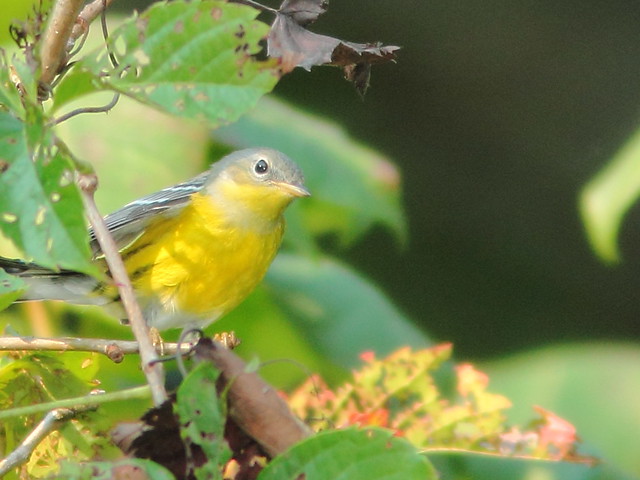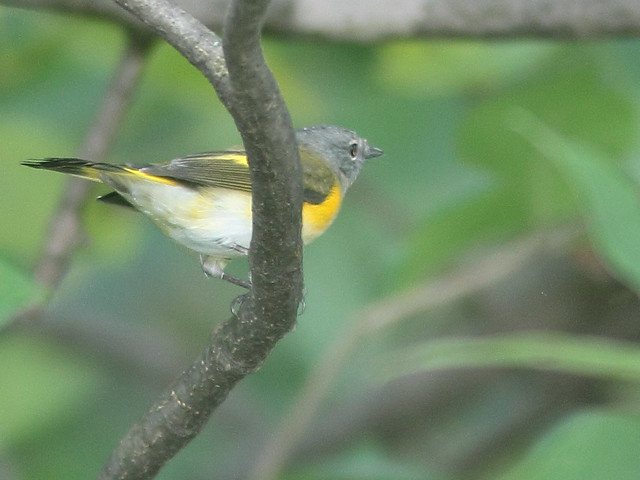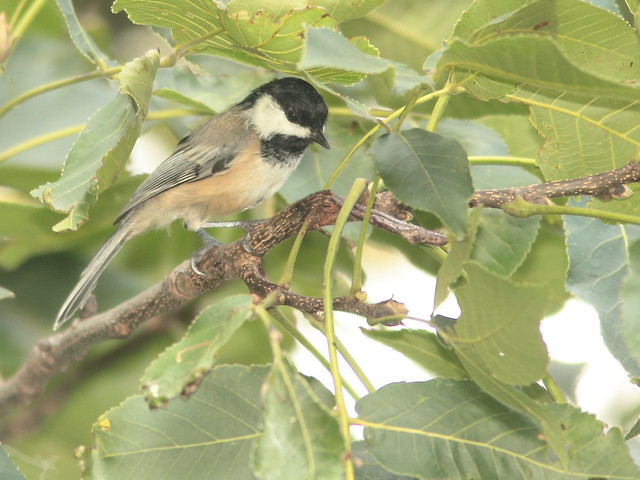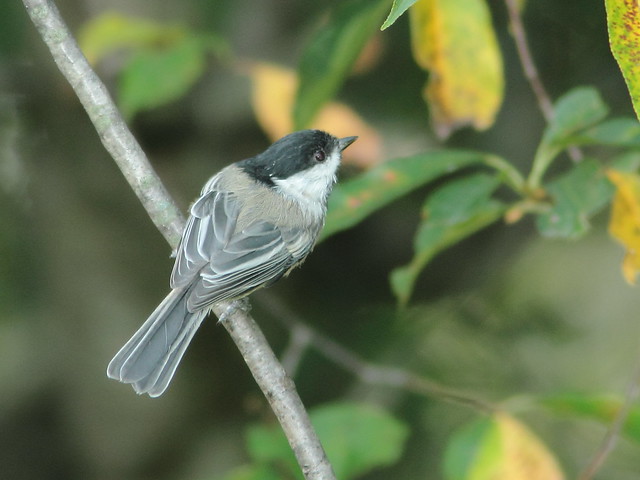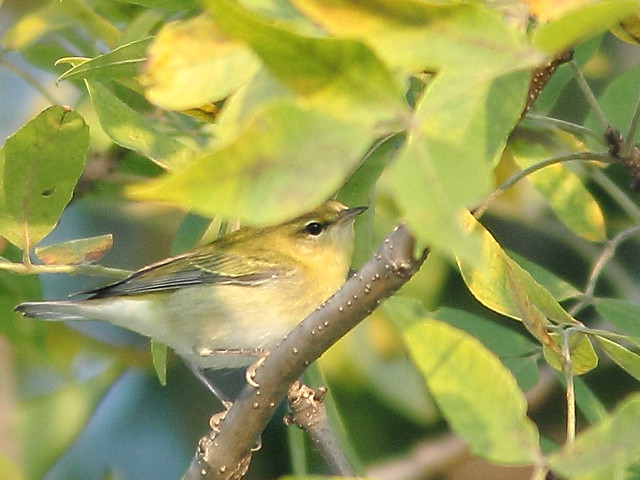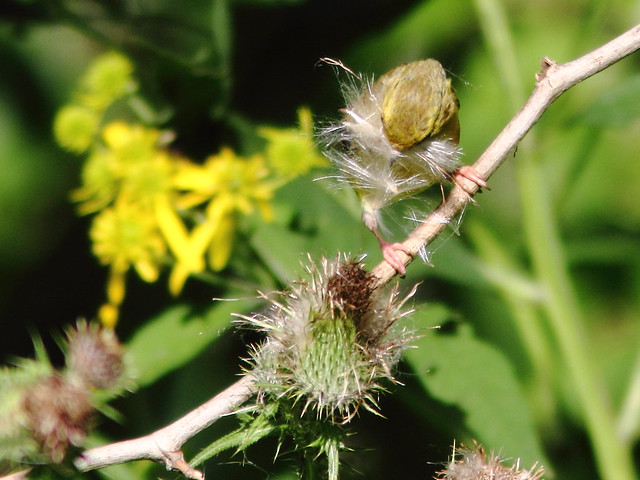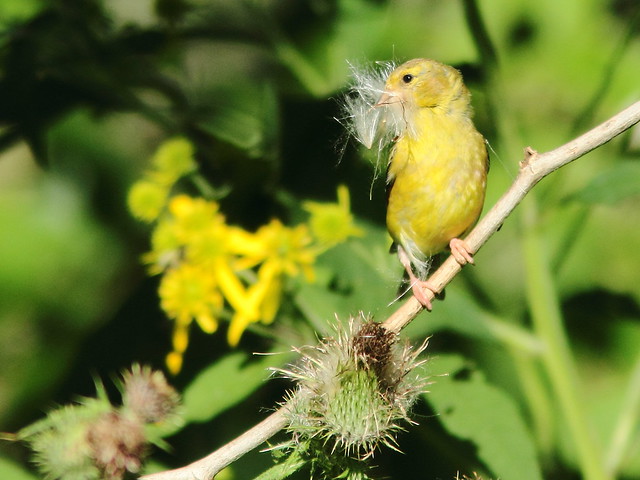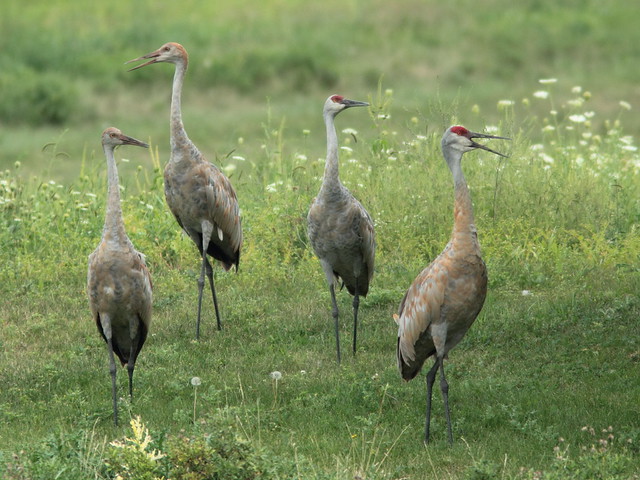Alas, we are leaving our second home in northeastern Illinois to return to Florida, just at the start of warbler migration. Yesterday Kane County Audubon Society sponsored its monthly “Scope Day” at Nelson Lake/Dick Young Forest Preserve, only about a mile from our condo. Although I obtained not a single decent shot of any of the Common Yellowthroats, American Redstarts, Magnolia Warblers and Black-throated Green Warblers we sighted, the arduous 3 1/2 mile walk around the lake made for a most enjoyable morning. We logged over 60 species.
The group included a nice mix of experienced and casual local birders, as well as visitors from out of state. They gathered on the east viewing platform to scope out herons and ducks:
Here, some of the two dozen birders who showed up are zeroing in on a Sedge Wren that posed nicely in the tall grass (until I raised my camera):
The past three days have been hotter and more humid than back “home” in Florida. The day before “Scope Day” I braved the heat and scouted out the east side of Nelson Lake. There were relatively few migratory birds to be seen after about 8:30 AM. They probably were hiding in the cool shade
This Magnolia Warbler was a sweet find, though its photo is a bit out of focus:
As usual, an American Redstart made my job very difficult by refusing to sit in one spot for more than a nanosecond:
When migrants are few and far between, I can always turn to more familiar subjects, such as this Black-capped Chickadee:
Common as they may be, I have found it difficult to get decent shots of chickadees; here is one from a different perspective:
A Ruby-throated Hummingbird appeared briefly in my viewfinder:
A couple of days earlier I serendipitously obtained a better image when a hummer wandered into my field of view as I was photographing a flock of Tennessee Warblers at Les Arends Forest Preserve; note its long tongue: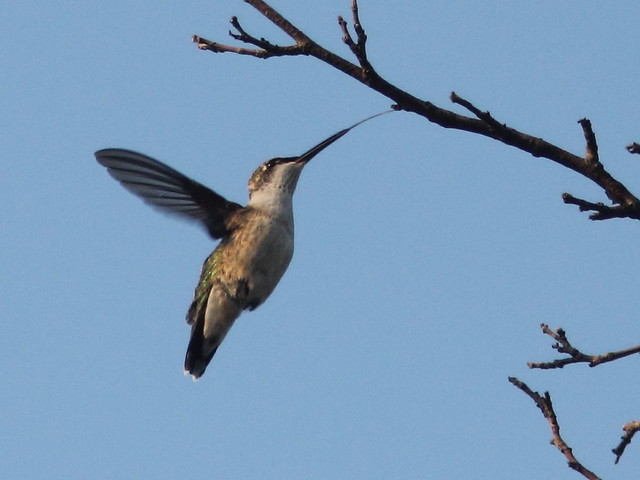
This redstart eyed me briefly: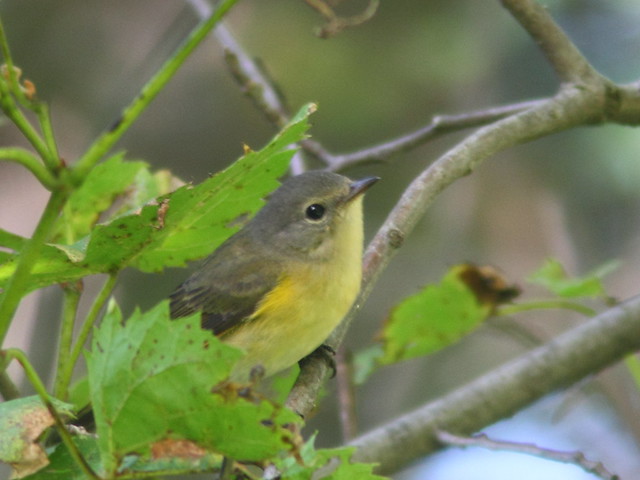
The Tennessee Warblers were nearly as uncooperative as the redstart had been. Here was my best shot of one, peering out from under a leaf:
The best I could obtain from this Nashville Warbler was a “butt shot,” which nicely illustrates the yellow undetail coverts and longer tail feathers that help distinguish it from the more numerous Tennessee Warblers when they mingle in the treetops:
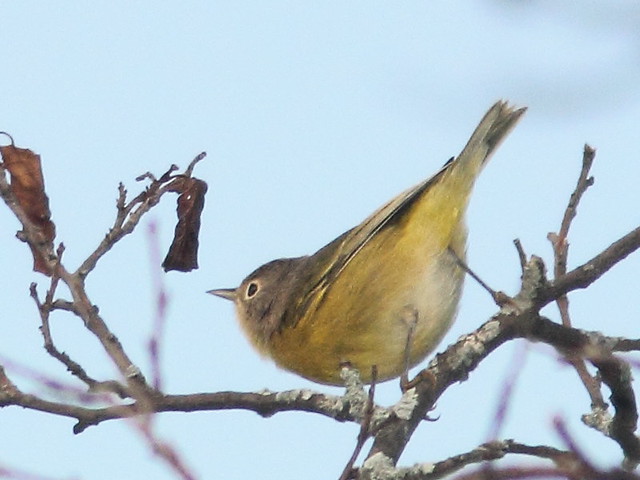
Three of the flycatchers that I spotted the day before before Scope Day failed to show up for the wider audience. This is a Least Flycatcher…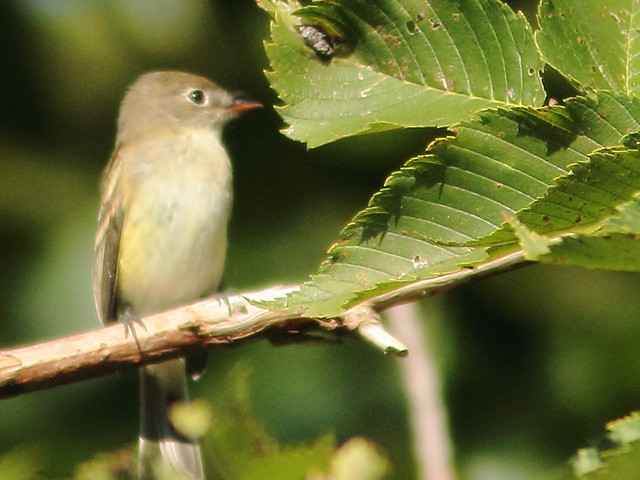
… a shadow-marred Great Crested Flycatcher…
… and here is my fuzzy shot that documents my sighting of an Olive-sided Flycatcher:
Exactly one year earlier, I had captured a better view of the Olive-sided Flyactcher at the same location, one that exhibits its namesake dark “vest:”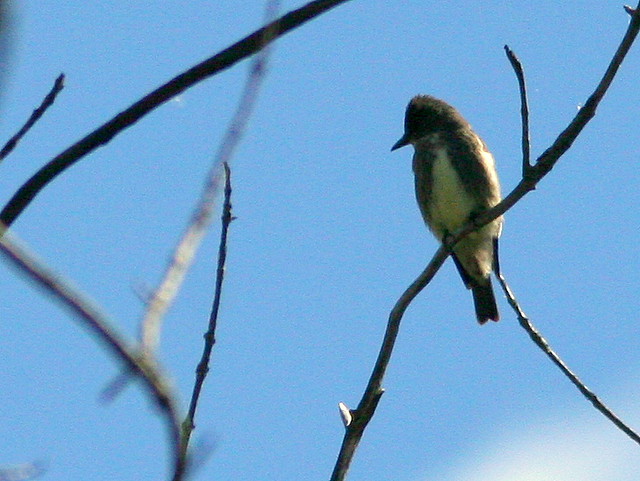
White feathers may ruffle up on the rump of this species, providing another useful field mark:
Compensating for the absence of their flycatcher cousins, Scope Day participant saw many Eastern Wood-Pewees: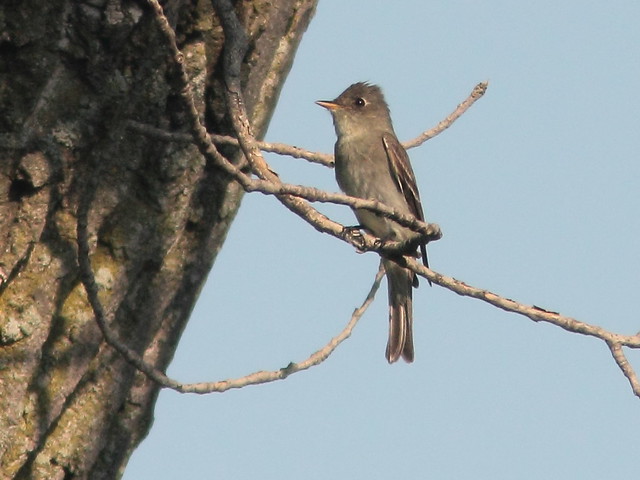
American Goldfinches were the most common land birds we saw on Scope Day: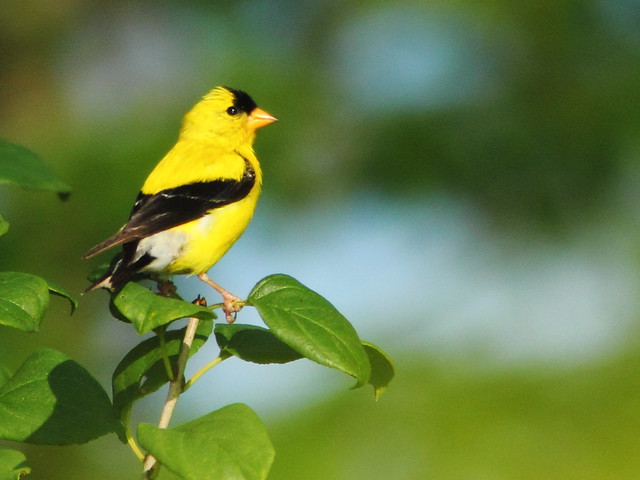
The goldfinches were busy attending to their young. Earlier this week, at Lippold Park, I captured this female gathering thistles for her nest:
Unlike nearly all other songbirds, goldfinches do not feed insects to their young. Instead, the adults ingest seeds and regurgitate a protein-rich “milk” from their crop linings:
Audubon walks are not only about birds, and participants got to see some interesting insects, including this Praying Mantis…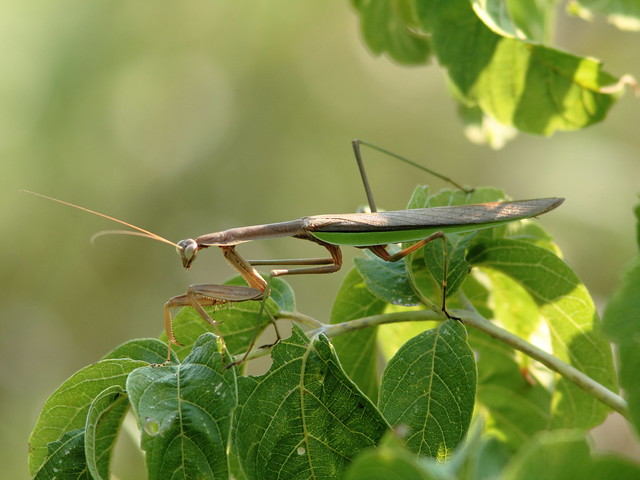
…a close-up of a nectar-sipping Eastern Tiger Swallowtail…
…a pollen-gathering Carpenter Bee (told from a Bumblebee by its dark non-furry abdomen)…
…and a vivid male Common Whitetail dragonfly resting trailside: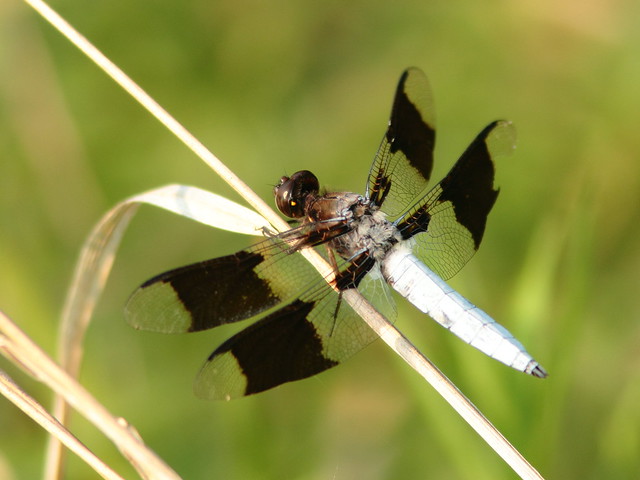
Finally, as I arrived home, hot and dehydrated, I saw the family of Sandhill Cranes resting in the shade of a willow next to our condo; my presence put them on alert:













